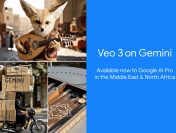
Seated, strapped and headsets on…. I had expected the rollercoaster ride that Samsung was offering through its Virtual Reality (VR) headset to be fun but not that real. After all, I was in a chair, at one spot and fully aware of that. But boy was I wrong! By the end of the ride, I had the same head rush and thrill as I do when I experience the real thing. Another example, very different in nature, for me was with The Ambassadors that used the Oculus Rift to communicate an important message by Terre des Hommes, an international human rights charity, on child slavery.
Both experiences transported me to a virtual world, where my emotions could not be more real. Both ask the question that if VR is understood, what is the potential that lies ahead?
Having experienced it first hand, I related with most reports that dubbed 2016 as the year of VR. It is the year when the United States President was seen trying a VR experience captured during his trip to Yosemite National Park and created by National Geographic, Felix & Paul Studios and Oculus. In some of the global events held this year including the Cannes Lions International Festival of Creativity, GITEX Technology Week and dmexco, VR was among the top talking points.
VR is considered a big deal in marketing with the likes of Oculus Rift, Playstation VR, Samsung Gear VR and HTC Vive are taking the medium mainstream. VR has revolutionized gaming and entertainment. Deloitte Global even predicted VR to have its first billion dollar year in 2016, with about USD 700 million in hardware sales and the remainder from content.
It is logical to expect VR to dominate the gaming world. Not only because it is a natural extension but also because one cannot scoff at the number of users adopting the new tech, that is estimated to reach 171 million. The technology is predicted to peak in 2021, but with 43 million people worldwide already owning a VR headset, its ownership might just rise more than three fold in two years.
As Mark Zuckerberg says, “Imagine enjoying a court side seat at a game or studying in a classroom of students and teachers all over the world by just putting on goggles.”
While this is just the beginning of the virtual ‘real’ experiences, how do we see the future of VR?
From a marketing viewpoint, the VR potential has to be better understood. Bringing an immersive experience, allowing marketers to give a more in-depth, 360-degree offering, VR has evolved storytelling itself. For the consumers, it is not about viewing a TV commercial but instead becoming active participants in the brand’s story. But like any new tech, it needs a certain investment and risk taking ability. For it to be the year of VR for marketers, it is important for trend setting CMOs to redefine the box and elevate consumer engagement to an all new high.
This column first appeared in the Sep-Oct 2016 print issue of The Arabian Marketer




